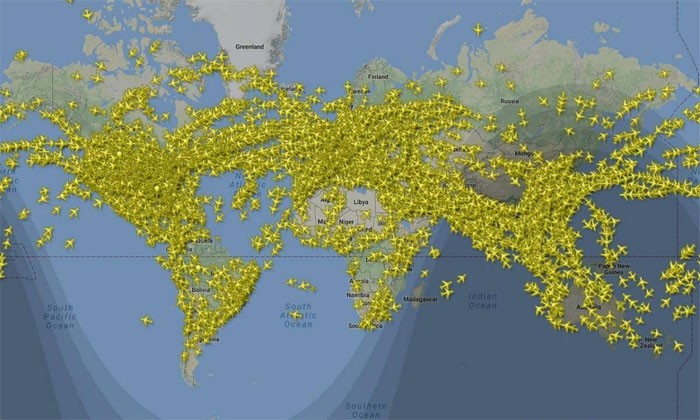Many people think the sky is vast and airplanes can fly freely like birds without worrying about collisions. However, this is not the case, and pilots must adhere to regulations, especially knowing how to ‘read’ aviation lights to avoid collisions.
At intersections, there are always traffic lights. Vehicles and pedestrians voluntarily respect the rules of “red means stop, green means go”, which helps prevent chaos and traffic accidents. The airspace follows similar principles.

Pilots must adhere to regulations, especially knowing how to “read” aviation lights to avoid collisions.
Although the sky is incredibly vast, the speed of airplanes is very fast, which still poses a risk of collisions. To prevent accidents in the air, in addition to specific flight paths designated for commercial aircraft on scheduled routes, pilots must continuously observe their surroundings—front, back, right, left, and above—to avoid other aircraft.
To assist pilots in monitoring their surroundings and keeping track of other aircraft on the same route, when flying at night, three aviation lights must be illuminated: two on the left and right sides and one at the tail of the aircraft. From the pilot’s perspective, the red light is always at the left wingtip, the green light is at the right wingtip, and the white light is mounted at the tail. These three lights can either be continuously illuminated or flash.
Once the aircraft activates its aviation lights at night, the pilots’ visibility improves significantly. If a pilot sees another aircraft at the same altitude and only notices two colored lights (red and green), it indicates that the other aircraft is approaching head-on, posing a collision risk, and evasive action must be taken.
If only one light is visible, it indicates that the other aircraft is either to the left or right. If all three lights are visible simultaneously, it means the other aircraft is flying above or below. In these situations, there is no danger, and pilots can confidently maintain their course.
However, modern aircraft operate at very high speeds, and relying solely on light signals is insufficient. What happens in poor weather conditions, such as clouds and fog? Currently, there is a device known as a Traffic Alert and Collision Avoidance System (TCAS) that can help pilots detect nearby aircraft.
This device is equipped with indicator lights, and the aircraft’s radar continuously emits radio waves around it. When another aircraft approaches, the radar waves are reflected back, causing the indicator lights to illuminate. From the different indicator lights, pilots can deduce the direction and relative distance of the nearby aircraft.


















































